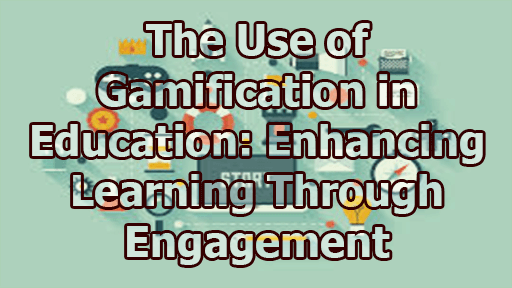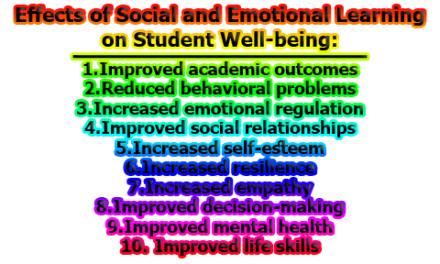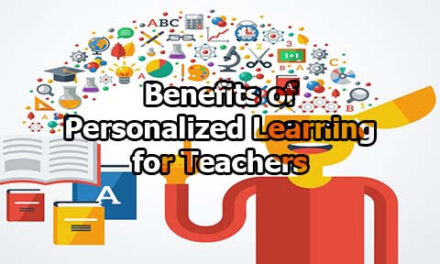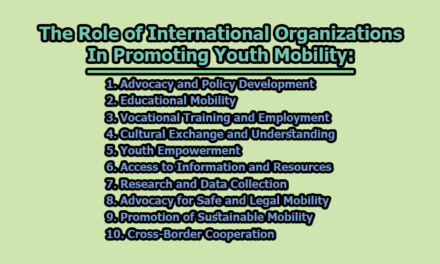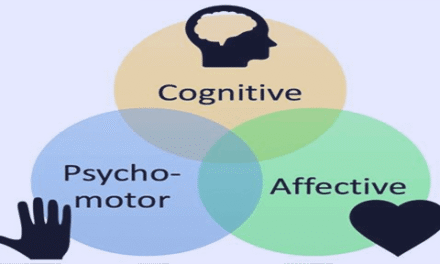The Use of Gamification in Education: Enhancing Learning Through Engagement
In an era characterized by rapid technological advancements and evolving educational paradigms, the integration of gamification in education has emerged as a transformative force. The traditional model of education, often marked by passive learning and disengaged students, is being reimagined through the infusion of game elements and principles. Gamification, the art of applying gaming dynamics to non-game contexts, offers the promise of enhanced learning experiences by capturing and sustaining students’ attention, fostering motivation, and promoting active participation. As educators and institutions seek innovative ways to meet the diverse needs of today’s learners, the use of gamification emerges as a compelling strategy to bridge the engagement gap and empower students to become active agents in their own educational journeys. In the rest of this article, we will explore the use of gamification in education: enhancing learning through engagement.
1. Origins of Gamification in Education:
Gamification in education has its roots in the intrinsic human desire for competition, achievement, and mastery. To understand its historical background, we can trace its origins to the early 2000s when the term “gamification” was coined and its subsequent rise in popularity in the early 2010s due to digital technologies.
The term “gamification” was first introduced by Nick Pelling in 2002. Pelling, a British computer programmer and inventor, used this term to describe the application of game elements and principles to non-game contexts. Although Pelling’s work was not directly related to education, it laid the foundation for the concept of gamification as we know it today.
Pelling’s idea was a precursor to the use of game mechanics and strategies in educational settings. His recognition of the potential to make tasks more engaging and enjoyable by incorporating elements commonly found in games was a significant step toward the gamification of education.
While the term “gamification” was coined earlier, it wasn’t until the early 2010s that gamification gained widespread recognition and popularity. This surge in interest can be attributed to the rapid advancement of digital technologies and the proliferation of online games during this period.
Deterding, Dixon, Khaled, and Nacke (2011) conducted foundational research on gamification. They recognized that the convergence of digital technology and gamification principles had the potential to transform various fields, including education. The widespread use of smartphones, tablets, and computers made it easier than ever to incorporate gamified elements into educational experiences.
The appeal of digital games, particularly among younger generations, highlighted the potential for harnessing the motivational and engagement aspects of gaming to improve learning outcomes. As educators and researchers began to explore these possibilities, gamification in education started to gain traction as a viable and promising approach to enhance the learning process.
2. Key Elements of Gamification:
To understand the essential components of gamification in education, it’s crucial to delve deeper into each element and explore how they contribute to creating engaging and effective learning experiences.
2.1 Game Mechanics (Zichermann & Cunningham, 2011): Game mechanics are the foundational rules and systems that define how a game operates. In the context of gamification in education, game mechanics are adapted and integrated to motivate and engage students. Some key game mechanics include:
- Points: Students earn points for completing tasks or achieving milestones. Points serve as a measure of progress and can be used to reward and recognize achievements.
- Badges: Badges are digital representations of achievements or skills acquired. They act as visible symbols of accomplishment and can motivate students to strive for more.
- Leaderboards: Leaderboards display the performance of students in comparison to their peers. They encourage healthy competition and can drive students to excel.
- Rewards: Rewards can take various forms, such as virtual items, privileges, or access to additional content. They provide incentives for students to participate and excel in learning activities.
2.2 Narrative and Storytelling (Gee, 2003): Narrative and storytelling techniques are powerful tools in gamification that help immerse students in the learning experience. Educational content is embedded within a compelling narrative, making it more engaging and memorable. Here’s how narrative and storytelling contribute to gamification:
- Emotional Connection: Stories evoke emotions, making students more invested in the content and characters, which enhances retention.
- Contextual Learning: The narrative provides context for the material, helping students understand its real-world applications.
- Conflict and Resolution: Stories often involve challenges and problem-solving, which align with educational goals and promote critical thinking.
2.3 Feedback Loops (Hamari, Koivisto, & Sarsa, 2014): Feedback loops in gamification provide students with immediate and relevant information about their performance. This feedback is essential for several reasons:
- Progress Tracking: Students can see how they are progressing, which helps them set goals and stay motivated.
- Error Correction: Immediate feedback allows students to identify and correct mistakes quickly, facilitating learning.
- Reinforcement: Positive feedback reinforces desired behaviors, encouraging students to continue engaging with the material.
2.4 Challenges and Goals (Deterding et al., 2011): Challenges and goals are integral to gamification as they provide students with a sense of purpose and direction. They are structured tasks or objectives that students aim to achieve:
- Clear Objectives: Challenges and goals set clear expectations for what students need to accomplish, reducing ambiguity.
- Progression: Gradually increasing the complexity of challenges keeps students engaged and motivated to advance.
- Achievement: Achieving goals and overcoming challenges provides a sense of accomplishment and satisfaction.
2.5 Choice and Autonomy (Deci & Ryan, 1985): Choice and autonomy in gamified learning experiences empower students by giving them control over certain aspects of their learning journey:
- Personalization: Students can choose their paths, topics of interest, or even the order in which they tackle challenges.
- Ownership: Autonomy fosters a sense of ownership and responsibility for learning outcomes, making students more invested.
- Motivation: When students have a say in their learning, they are more likely to be motivated and engaged.
3. Benefits of Gamification in Education:
Gamification in education offers a myriad of benefits that positively impact student engagement, retention, personalization, skill development, and data-driven decision-making. Let’s explore each of these advantages:
3.1 Increased Engagement: Gamification has a remarkable ability to captivate and maintain students’ attention, making the learning experience more enjoyable and immersive.
- Captivating Attention (Anderson & Dill, 2000): Gamification leverages elements like points, badges, leaderboards, and rewards to create an engaging environment. Students are drawn into the activities as they strive to earn rewards and compete with peers.
- Higher Motivation (Landers & Callan, 2014): The competitive and rewarding nature of gamification motivates students to actively participate in educational tasks. They become more motivated to complete assignments and achieve better results.
3.2 Enhanced Retention and Comprehension: Gamification improves students’ ability to remember and understand complex concepts through storytelling and immediate feedback.
- Role of Storytelling (Sadoski et al., 1999): Incorporating storytelling in gamified learning experiences helps students connect emotionally to the content. This emotional engagement enhances memory retention, making it easier for students to recall information.
- Immediate Feedback (Hattie & Timperley, 2007): Gamification provides students with instant feedback on their performance. This timely information allows students to correct mistakes, adjust their approach, and reinforce their learning.
3.3 Personalized Learning: Gamification enables tailored learning experiences that cater to individual student needs and preferences.
- Tailored Learning (Huang et al., 2016): Gamified platforms can adapt content and challenges based on a student’s progress and performance. This personalization ensures that students receive content at their appropriate skill level, reducing frustration and boredom.
- Adaptive Challenges (Van Eck, 2006): Gamification often incorporates adaptive challenges that become more challenging as students advance. This ensures that learning remains engaging and aligned with each student’s pace and skill level.
3.4 Development of Critical Skills: Gamification fosters the development of essential 21st-century skills, preparing students for success in a rapidly changing world.
- Cultivating 21st-Century Skills (Steinkuehler & Duncan, 2008): Gamified learning experiences require students to collaborate, solve problems, think creatively, and adapt to changing situations. These skills are integral to success in the modern workforce and society.
- Examples of Critical Skills: Through gamification, students practice skills like teamwork, problem-solving, innovation, and adaptability. For instance, collaborative challenges in gamified environments encourage students to work together, fostering a sense of cooperation and shared goals.
3.5 Data-Driven Insights: Gamification in education allows educators to gather valuable data, enabling them to make informed decisions and provide personalized support to students.
- Gathering Data (Hamari et al., 2014): Gamified platforms collect data on student interactions, performance, and progress. This data provides insights into individual and group learning patterns, highlighting areas where students may need additional support.
- Personalized Support (Shute & Zapata-Rivera, 2012): The data collected through gamification can be used to identify struggling students early in their learning journey. Educators can then intervene with targeted support, ensuring that students receive the assistance they need to succeed.
4. Challenges and Considerations in Gamification in Education:
Gamification in education offers numerous advantages, but its successful implementation comes with various challenges and considerations. To ensure the effective integration of gamification into educational practices, educators, policymakers, and developers must address these challenges:
4.1 Implementation Challenges:
4.1.1 Designing Relevant Game Elements (Deterding et al., 2011):
- Challenge: Creating game elements that align with educational objectives can be complex. Designing tasks and rewards that genuinely enhance learning is crucial.
- Solution: Collaboration between educators and game designers can ensure that gamified elements are pedagogically sound and relevant to the curriculum.
4.1.2 Balancing Fun with Educational Content (Hamari et al., 2014):
- Challenge: There is a risk of prioritizing fun over educational content, potentially compromising the quality of learning experiences.
- Solution: Gamification should strike a balance between engagement and educational value. Game elements should enhance, rather than distract from, the learning process.
4.1.3 Ensuring Accessibility for All Students (Johnson, Adams, & Cummins, 2012):
- Challenge: Not all students have equal access to technology, which can lead to disparities in their gamified learning experiences.
- Solution: Schools and institutions should strive for equitable access to devices and internet connectivity, ensuring that gamified content is accessible to all students.
4.2 Overemphasis on Rewards:
4.2.1 The Potential Downside of Extrinsic Rewards (Deci, Koestner, & Ryan, 1999):
- Challenge: Overreliance on extrinsic rewards, such as points and badges, may diminish intrinsic motivation—the inherent satisfaction derived from learning.
- Solution: Gamification should focus on intrinsic motivation by designing activities that emphasize enjoyment, competence, and autonomy, rather than just rewards.
4.2.2 The Importance of Maintaining Intrinsic Motivation:
- Challenge: Striking a balance between extrinsic and intrinsic motivation can be challenging, but it is essential to sustain long-term engagement.
- Solution: Incorporate elements that tap into students’ innate curiosity and desire to learn, emphasizing the joy of discovery and mastery.
4.3 Technological Hurdles:
4.3.1 Addressing Issues Related to Device Availability (Kebritchi, Hirumi, & Bai, 2010):
- Challenge: Not all students have access to personal devices or reliable internet connections required for gamified learning.
- Solution: Schools can provide access to devices, offer resources for internet connectivity, or develop offline alternatives to ensure inclusivity.
4.3.2 Promoting Digital Literacy for Equitable Education (Warschauer, 2003):
- Challenge: Digital literacy is essential for effective engagement with gamified learning tools, and not all students possess these skills.
- Solution: Incorporate digital literacy training into the curriculum to empower students with the necessary skills to navigate gamified platforms effectively.
4.4 Teacher Training and Buy-In:
4.4.1 The Critical Role of Teachers in Gamified Education (Hwang & Wu, 2014):
- Challenge: Teachers may lack familiarity with gamification techniques and may be uncertain about its effectiveness.
- Solution: Provide professional development opportunities and resources for educators to gain proficiency in gamified teaching methods.
4.4.2 The Need for Training and Support for Effective Integration:
- Challenge: Successful implementation of gamification requires ongoing training and support, which can strain educational resources.
- Solution: Invest in teacher training and ongoing support, showcasing the benefits of gamified learning and helping educators integrate it effectively into their teaching practices.
5. Real-World Applications of Gamification in Education:
Gamification has found its way into various educational contexts, including traditional classrooms, online learning environments, and educational technology. These real-world applications demonstrate how gamification can be effectively employed to enhance the learning experience:
5.1 Gamified Classrooms:
5.1.1 Case Studies Showcasing Successful Implementation (Anderson, 2013):
- Illustrative Cases: In Anderson’s study, several classrooms implemented gamification to varying degrees of success. These cases highlight how gamification principles can be applied across different subjects and grade levels.
- Subject Diversity: The cases encompass a wide range of subjects, from mathematics to language arts, demonstrating that gamification is adaptable to various disciplines.
5.1.2 Examples from Various Educational Levels and Subjects:
- Elementary School: In an elementary school context, gamification might involve interactive math games that make learning arithmetic fun and engaging.
- High School: High school educators may use gamification to teach history through interactive simulations or gamified quizzes.
- Higher Education: In higher education, gamified learning experiences might include business simulations or virtual laboratories that promote problem-solving and critical thinking.
5.2 Gamified Educational Technology:
5.2.1 Overview of Popular Gamified Educational Tools (Steinkuehler & Duncan, 2008):
- Educational Games: Gamified educational tools like “Minecraft: Education Edition” and “Kahoot!” have gained popularity. These tools provide interactive, game-based learning experiences that cater to various subjects and age groups.
- Virtual Labs: Virtual laboratory platforms like “Labster” offer gamified simulations that allow students to conduct experiments and explore scientific concepts in a virtual environment.
5.2.2 Their Impact on Student Outcomes and Engagement:
- Improved Retention: Educational games often lead to better retention of information, as they create memorable experiences that link knowledge to practical application.
- Increased Engagement: Gamified educational technology captures students’ interest and maintains their focus, resulting in higher motivation levels and participation rates.
- Personalized Learning: Many gamified tools offer adaptive challenges and feedback, tailoring the learning experience to individual student needs.
5.3 Gamification in Online Learning:
5.3.1 The Rise of Online Learning and Its Connection to Gamification (Deterding et al., 2011):
- Online Learning Platforms: As online education has become increasingly prevalent, gamification has become a valuable tool for keeping remote students engaged and motivated.
- Hybrid Learning: Hybrid learning models, combining online and in-person instruction, often incorporate gamified elements to bridge the gap between digital and traditional learning.
5.3.2 Strategies and Best Practices for Incorporating Gamification into Virtual Classrooms:
- Clear Objectives: Gamified online courses should have well-defined learning objectives and tie gamified elements directly to these goals.
- Feedback Mechanisms: Incorporate feedback loops that provide students with real-time information on their progress, helping them stay on track.
- Collaborative Elements: Encourage collaboration among online learners through gamified challenges, fostering a sense of community and teamwork.
In conclusion, in the ever-evolving landscape of education, the adoption of gamification stands as a beacon of promise. It has ushered in a new era where learning is not only informative but also captivating, where students are not merely recipients of knowledge but active participants in their educational odyssey. By leveraging the power of game mechanics, storytelling, immediate feedback, personalized learning, and skill development, gamification enhances learning outcomes and equips students with vital 21st-century skills. However, as we embrace this innovative approach, it is imperative to acknowledge the challenges and ensure accessibility, balance, and intrinsic motivation. In doing so, we chart a course toward a more engaging, effective, and equitable educational landscape, where students are inspired to learn, grow, and excel.
Frequently Asked Questions [FAQs]:
What is gamification in education?
Gamification in education refers to the integration of game elements, such as points, badges, leaderboards, and rewards, into the learning experience to make it more engaging and motivating for students. It harnesses the principles of game design to enhance educational outcomes.
How does gamification benefit education?
Gamification offers several benefits in education, including increased student engagement, improved retention and comprehension of content, the development of critical skills, and the ability to gather data for personalized support and interventions.
What are some examples of gamification in the classroom?
Gamification in the classroom can take various forms. Examples include using educational games, interactive quizzes, point systems, and badges to motivate students and make learning more enjoyable. Teachers can also incorporate storytelling and narrative elements into lessons.
Is gamification suitable for all grade levels and subjects?
Yes, gamification can be adapted for different grade levels and subjects. It has been successfully implemented from elementary to higher education across a wide range of disciplines, including math, science, language arts, and even professional training.
Are there any downsides to using gamification in education?
While gamification offers many advantages, it’s essential to strike a balance between fun and educational content. Overemphasis on extrinsic rewards can diminish intrinsic motivation, so careful design is necessary to ensure that the learning experience remains meaningful.
Do all students have access to gamified learning resources?
Access to gamified learning resources can be a concern, as not all students may have access to personal devices or reliable internet connections. Schools and institutions should aim for equitable access to ensure that gamified content is accessible to all students.
What role do teachers play in gamified education?
Teachers play a critical role in implementing gamification effectively. They need training and support to integrate gamified elements into their teaching practices and provide guidance to students. Teachers can also monitor student progress and offer personalized assistance when needed.
Can gamification be used in online learning environments?
Yes, gamification is well-suited for online learning environments. It can help maintain student engagement in virtual classrooms, bridge the gap between digital and traditional learning, and provide interactive experiences that enhance online education.
How can I get started with gamification in education?
To get started with gamification in education, consider researching and adopting gamified educational tools, attending professional development workshops, and collaborating with other educators who have experience in gamified teaching methods.
What is the future of gamification in education?
The future of gamification in education looks promising, with continued innovation in the field. As technology evolves and educators gain more experience, gamification will likely become an even more integral part of modern educational practices, providing engaging and effective learning experiences for students.
References:
- Anderson, C. A., & Dill, K. E. (2000). Video games and aggressive thoughts, feelings, and behavior in the laboratory and in life. Journal of Personality and Social Psychology, 78(4), 772-790.
- Anderson, C. A. (2013). Violent video games and other media violence. In D. G. Singer & J. L. Singer (Eds.), Handbook of Children and the Media (2nd ed., pp. 223-244). Sage Publications.
- Deci, E. L., Koestner, R., & Ryan, R. M. (1999). A meta-analytic review of experiments examining the effects of extrinsic rewards on intrinsic motivation. Psychological Bulletin, 125(6), 627-668.
- Deci, E. L., & Ryan, R. M. (1985). Intrinsic motivation and self-determination in human behavior. Plenum.
- Deterding, S., Dixon, D., Khaled, R., & Nacke, L. (2011). From game design elements to gamefulness: defining” gamification”. In Proceedings of the 15th international academic MindTrek conference: Envisioning future media environments (pp. 9-15).
- Gee, J. P. (2003). What video games have to teach us about learning and literacy. Computers in Entertainment (CIE), 1(1), 20-20.
- Hamari, J., Koivisto, J., & Sarsa, H. (2014). Does gamification work?-A literature review of empirical studies on gamification. 2014 47th Hawaii international conference on system sciences, 3025-3034.
- Hattie, J., & Timperley, H. (2007). The power of feedback. Review of Educational Research, 77(1), 81-112.
- Huang, W. H., Huang, W. Y., Tschopp, J., & Peng, Y. (2016). Enhancing game-based learning in computer programming with personalized gamification. Computers & Education, 96, 55-71.
- Hwang, G. J., & Wu, P. H. (2014). Applications, impacts, and trends of mobile technology-enhanced learning: A review of 2008–2012 publications in selected SSCI journals. International Journal of Mobile Learning and Organisation, 8(2), 83-95.
- Johnson, L., Adams Becker, S., & Cummins, M. (2012). Technology outlook for STEM+ education 2012-2017: An NMC horizon project sector analysis. The New Media Consortium.
- Kebritchi, M., Hirumi, A., & Bai, H. (2010). The effects of modern mathematics computer games on mathematics achievement and class motivation. Computers & Education, 55(2), 427-443.
- Landers, R. N., & Callan, R. C. (2014). Casual social games as serious games: The psychology of gamification in undergraduate education and employee training. Serious Games and Edutainment Applications, 399-423.
- Sadoski, M., Goetz, E. T., Olivarez, A., & Lee, Y. S. (1999). The effects of modality strength and assignment of words to pictures on conceptual recall of scientific terms. Contemporary Educational Psychology, 24(4), 392-405.
- Shute, V. J., & Zapata-Rivera, D. (2012). Adaptive educational systems. In The Cambridge Handbook of the Learning Sciences (pp. 345-365). Cambridge University Press.
- Steinkuehler, C., & Duncan, S. (2008). Scientific habits of mind in virtual worlds. Journal of Science Education and Technology, 17(6), 530-543.
- Van Eck, R. (2006). Digital game-based learning: It’s not just the digital natives who are restless. EDUCAUSE Review, 41(2), 16-30.
- Warschauer, M. (2003). Technology and social inclusion: Rethinking the digital divide. The MIT Press.
- Zichermann, G., & Cunningham, C. (2011). Gamification by design: Implementing game mechanics in web and mobile apps. O’Reilly Media.

Library Lecturer at Nurul Amin Degree College

